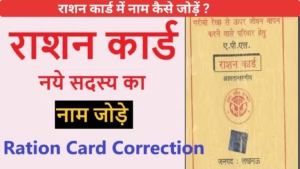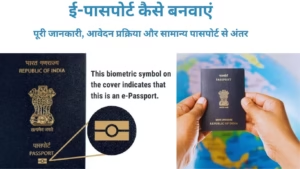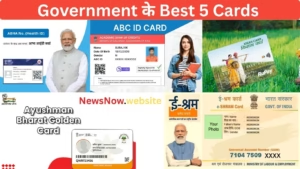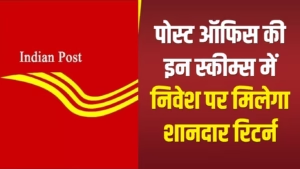Millions of Indians invest in Post Office Small Savings Schemes such as RD (Recurring Deposit), TD (Time Deposit), MIS (Monthly Income Scheme), PPF (Public Provident Fund), and SCSS (Senior Citizen Saving Scheme) because these are safe, government-backed, and offer guaranteed returns.
But a common and very important question arises — What happens if the account holder dies? How can the nominee or legal heir claim the death benefit under a Post Office account?
This article explains, in detail, the step-by-step claim process, documents required, nominee vs. legal heir rules, claim settlement timelines, and important tips to make the process smooth.
What is Death Benefit in Post Office Schemes?
When an investor opens a Post Office account, they are given the option to add a nominee. This nominee is the person authorized to receive the full account balance (principal + accrued interest) in the event of the investor’s death.
- If a nominee is registered, the claim process is very simple.
- If no nominee is registered, the money will go to the legal heirs (family members such as spouse, children, parents), but only after proper legal documentation such as a succession certificate or legal heir certificate.
Step-by-Step Process to Claim Death Benefit
1. Notify the Post Office
The nominee/legal heir must first inform the respective Post Office about the death of the account holder. They will be asked to provide the original death certificate along with photocopies.
2. Collect the Claim Form (SB-30)
The claimant has to fill out Form SB-30 (Claim Form) available at the Post Office. This form requires details of the deceased account holder, the claimant (nominee/legal heir), and the type of account.
3. Submit Required Documents
Along with the claim form, the following documents need to be submitted:
- Original + copy of the death certificate
- Original passbook of the deceased account
- ID proof of claimant (Aadhaar, PAN, Voter ID, Passport, etc.)
- Address proof of claimant
- Passport-size photographs of claimant
- If no nominee: Succession Certificate / Legal Heir Certificate / Indemnity Bond with witnesses
4. Verification by the Post Office
The Post Office staff will verify all documents. If a nominee is registered, the verification process is faster. If there is no nominee, the legal heirs must provide court-issued documents to establish their claim.
5. Claim Settlement
- If nominee: Amount is usually settled within 7–30 working days.
- If no nominee (legal heir case): It may take 2–3 months depending on document verification and legal requirements.
Documents Required – Nominee vs Legal Heir
| Case | Documents Required |
|---|---|
| Nominee Registered | Death Certificate, Passbook, SB-30 Claim Form, Nominee ID & Address Proof, Photographs |
| No Nominee | Death Certificate, Passbook, Succession/Legal Heir Certificate, Indemnity Bond, Claim Form, ID Proofs |
Nominee vs Legal Heir – The Key Difference
- Nominee: A person officially nominated by the account holder. The claim is simple and quick.
- Legal Heir: Family members who inherit in the absence of a nominee. They need to go through a legal process and provide certificates from a competent court/authority.
Tip: Always add/update nominee details in Post Office accounts to avoid legal complications for your family.
Real-Life Example
Suppose Mr. Sharma invested in Senior Citizen Saving Scheme (SCSS) and nominated his son as the beneficiary. Upon his death, his son submits the death certificate, passbook, and claim form. After verification, the amount is transferred to his account within 2–3 weeks.
If no nominee was registered, then Mr. Sharma’s wife/children would need to get a succession certificate from the court, making the process much longer.
Tax Implications
- The death benefit received by a nominee or legal heir is not taxable, as it is treated as inheritance/transfer and not income.
- However, for transparency, it should be disclosed under the “Exempt Income” section while filing Income Tax Returns (if the amount is significant).
Important Tips for Smooth Settlement
- Always register and update nominee details while opening or maintaining Post Office accounts.
- Keep passbooks and certificates safe; they are mandatory for claims.
- Apply for claim settlement as soon as possible after the death to avoid complications.
- If there are multiple legal heirs, provide a mutual consent letter or succession certificate to avoid disputes.
- Self-attest all photocopies before submitting them.
FAQs – Death Benefit Claim in Post Office Schemes
Q1. How long does the claim settlement take?
For nominees, usually 7–30 working days. For legal heirs, it may take up to 2–3 months.
Q2. What if the passbook is lost?
You will need to apply for a duplicate passbook and provide an affidavit along with the death certificate.
Q3. Is the nominee the final owner of the money?
No. Legally, the nominee acts as a trustee of the money. Final ownership belongs to the legal heirs. If disputes arise, the court decides.
Q4. Can there be multiple nominees?
Yes, you can register more than one nominee and specify the share percentage.
Q5. Can an NRI be a nominee?
Yes, NRIs can also be registered as nominees.
Conclusion
Post Office Small Savings Schemes are among the most trusted investment options in India. But it is equally important to understand the death claim process to ensure that the hard-earned savings reach the rightful beneficiary.
- If a nominee is registered, the process is simple, quick, and hassle-free.
- If there is no nominee, the process becomes lengthy and requires legal documents.
Therefore, every investor should nominate a trusted person in their Post Office accounts. This small step ensures that their family can easily claim the death benefit without unnecessary legal battles.
Disclaimer
This article is for informational purposes only. The rules, forms, and processes related to Post Office Small Savings Schemes may change as per government notifications and postal department guidelines. Readers are advised to verify the latest details from the official India Post website or consult their nearest Post Office before proceeding with any claim.







